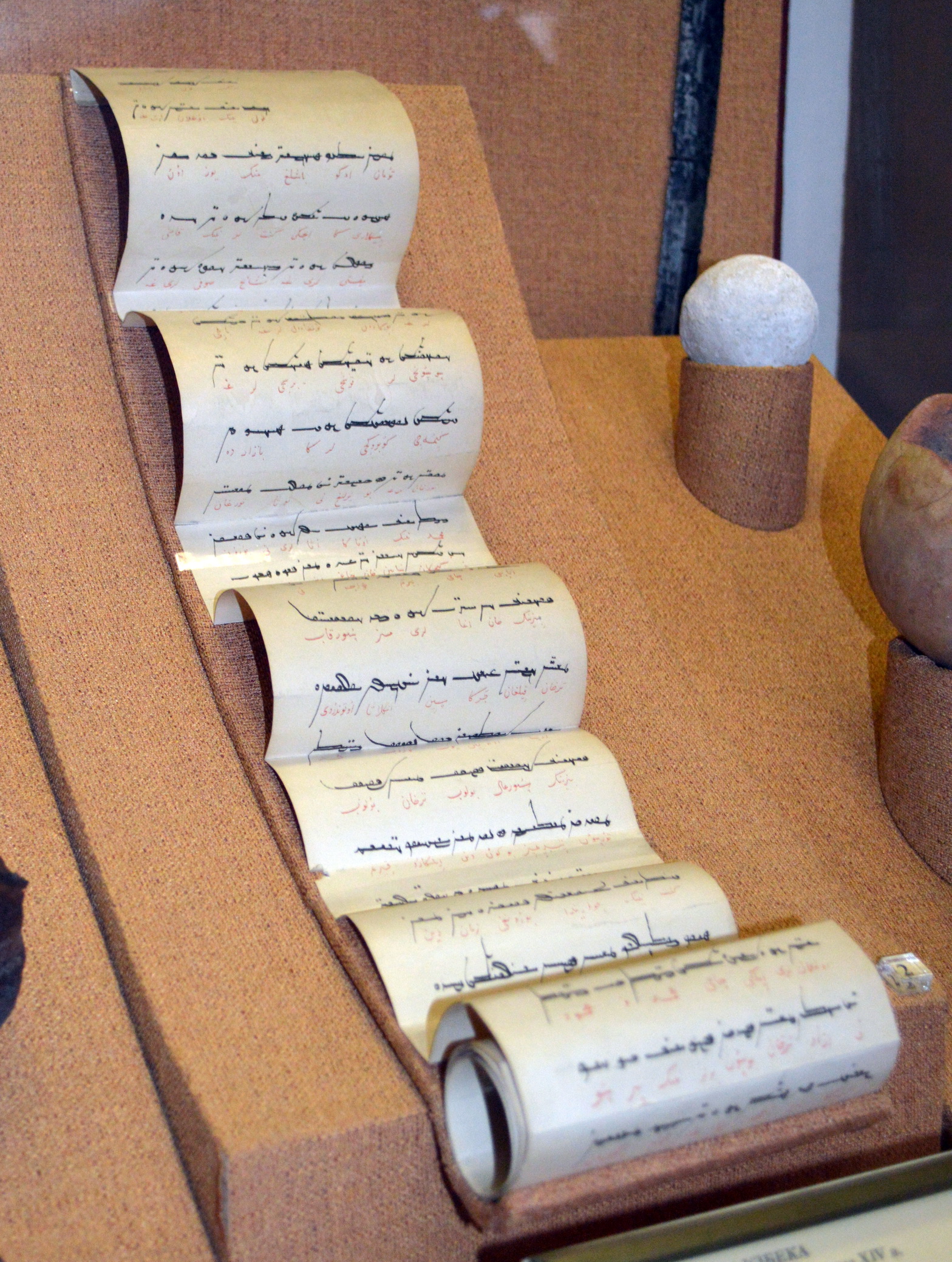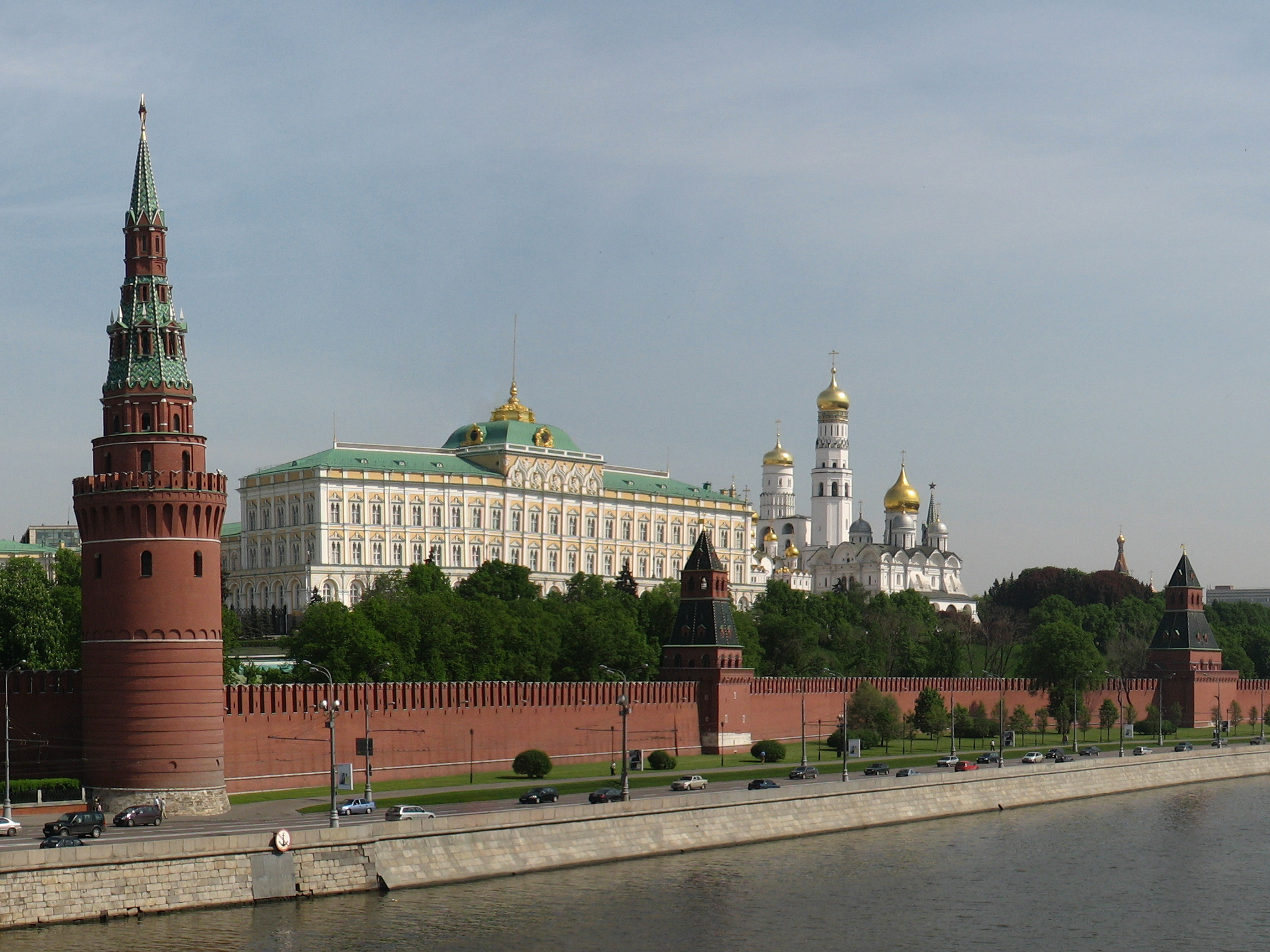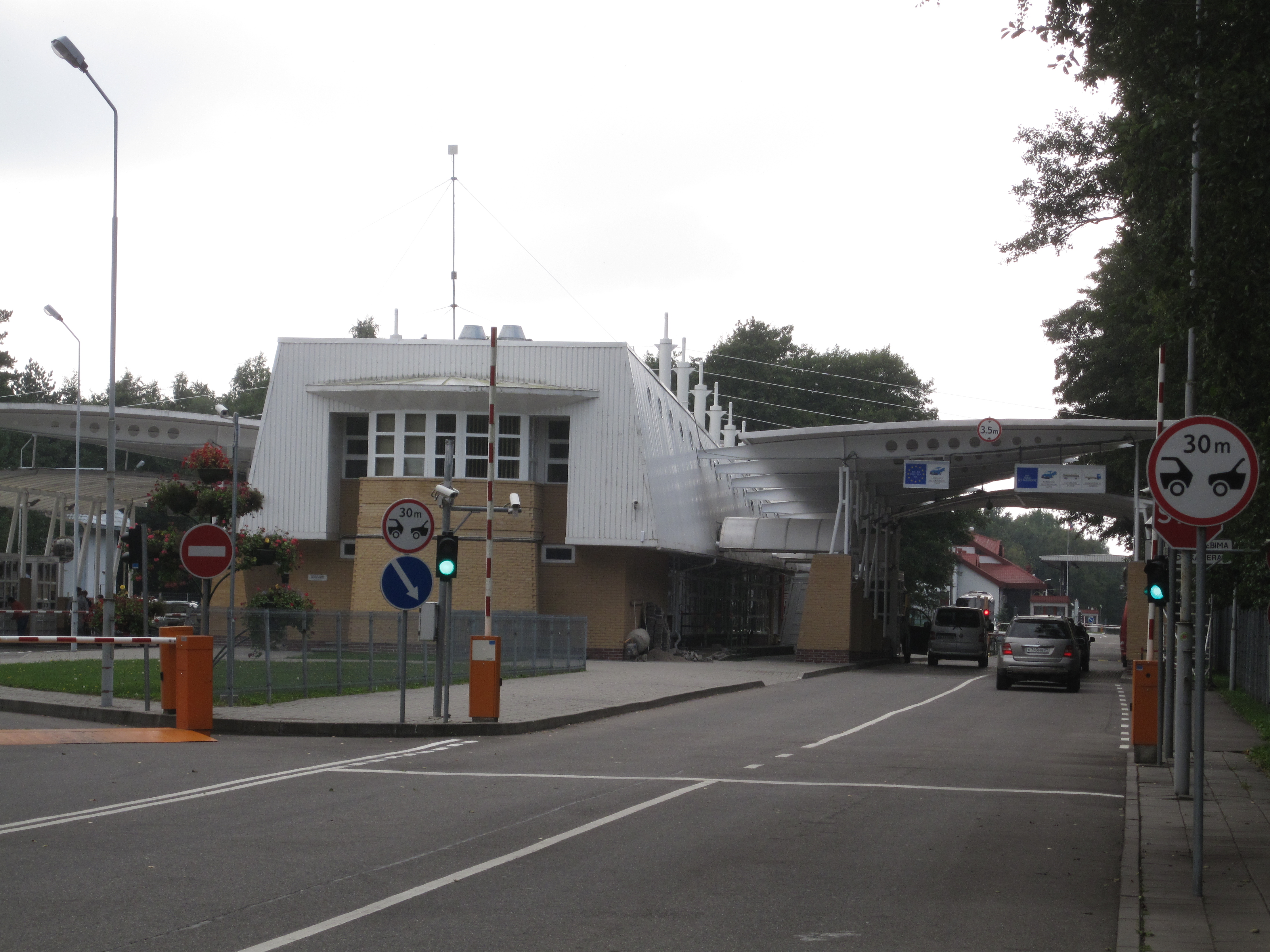|
Lithuanian–Muscovite War (1368–1372)
The Lithuanian–Muscovite War, known in Russia as Litovschina (russian: Литовщина) encompasses three raids by Algirdas, Grand Duke of Lithuania, to the Grand Duchy of Moscow in 1368, 1370, and 1372. Algirdas organized the raids against Dmitry Donskoy in support of the Principality of Tver, chief rival of Moscow. In 1368 and 1370, Lithuanians besieged Moscow and burned the posad, but did not succeed in taking the city's Kremlin. In 1372, the Lithuanian army was stopped near Lyubutsk where, after a standoff, the Treaty of Lyubutsk was concluded. Lithuanians agreed to cease their aid to Tver, which was defeated in 1375. Mikhail II of Tver had to acknowledge Dmitry as "elder brother". Background Influence and power of the Grand Duchy of Moscow grew steadily and its interests clashed with those of Lithuania. After the Battle of Blue Waters in 1362 Lithuania took over the Principality of Kiev and became a direct neighbor of Moscow. In 1368, Mikhail II of Tver became Prince of T ... [...More Info...] [...Related Items...] OR: [Wikipedia] [Google] [Baidu] |
Illustrated Chronicle Of Ivan The Terrible
The Illustrated Chronicle of Ivan the Terrible (russian: Лицевой летописный свод, Litsevoy letopisny svod) is the largest compilation of historical information ever assembled in medieval Russia. It covers the period from the Genesis creation narrative, creation of the world to the year 1567. It is also informally known as the Tsar Book (Царь-книга), in an analogy with Tsar Bell and Tsar Cannon. (retrieved May 10, 2015) The set of manuscripts was commissioned by Ivan the Terrible specifically for Library of Ivan the Terrible, his royal library. The literal meaning of the Russian title is "fa ... [...More Info...] [...Related Items...] OR: [Wikipedia] [Google] [Baidu] |
Prince Of Tver
The title of Prince of Tver was borne by the head of the branch of the Rurikid dynasty that ruled the Principality of Tver. In 1247 Tver was allocated to Grand Prince Alexander Nevsky, and became an independent principality. In 1252, the principality passed to his brother Yaroslav, who became the ancestor of the Tver dynasty of princes. List of Princes of Tver In 1485, Ivan III conquered Tver, and until 1490, his son Ivan the Young governed the duchy. See also {{commonscat, Princes of Tver * List of Russian rulers * Rulers of Kievan Rus' Further reading * Bibliography of the history of the Early Slavs and Rus' * Bibliography of Russian history (1223–1613) * List of Slavic studies journals External links * ''Borzakovskiy Vladimir Stepanovich''. (1876) (in Russian)History of the Prince of Tver(История Тверского княжества) at Runivers.ru in DjVu and PDF formats Grand Duchy of Tver Tver Tver Tver ( rus, Тверь, p=tvʲerʲ) is a city and the ... [...More Info...] [...Related Items...] OR: [Wikipedia] [Google] [Baidu] |
Yarlyk
A jarlig ( mn, зарлиг, zarlig; russian: ярлык, ''jarlyk'', also transliterated yarlyk in Russian and Turkic, or even more correctly yarlıq, and the Tatar: yarlığ) is an edict or written commandant of Mongol and Chinggisid rulers' "formal diplomas". It was one of three types of non-fundamental law pronouncements that had the effect of a regulation or ordinance, the other two being ''debter'' (a record of precedence cases for administration and judicial decisions) and ''billing'' (maxims or sayings attributed to Genghis Khan). The jarliq provide important information about the running of the Mongol Empire. Ögedei Khagan prohibited the nobility from issuing gergees (tablet that gave the bearer authority to demand goods and services from civilian populations) and jarliqs in the 1230s. From the mid-13th to mid-15th centuries, all princes of Northeastern Rus received jarliq authorizing their rule. The issuing of jarlyk on governing of Rus finalized the establishmen ... [...More Info...] [...Related Items...] OR: [Wikipedia] [Google] [Baidu] |
Bryansk
Bryansk ( rus, Брянск, p=brʲansk) is a city and the administrative center of Bryansk Oblast, Russia, situated on the River Desna, southwest of Moscow. Population: Geography Urban layout The location of the settlement was originally associated with navigable river-routes and was located in the area of the Chashin Kurgan, where the fortress walls were erected. For reasons that have not yet been clarified, the city changed its location and by the middle of the 12th century had established itself on the steep slopes of the right bank of the Desna on Pokrovskaya Hill (russian: Покровская гора). The foundations of the future urban development of the city were laid even earlier, when around the city-fortress in the 17th century after the Time of Troubles of 1598-1613 on the coastal strip at the foot of the Bryansk fortress the posadskaya "Zatinnaya Sloboda" was upset, and on the upper plateau, between Verkhniy Sudok and White Kolodez - the "Streletskaya Sloboda". ... [...More Info...] [...Related Items...] OR: [Wikipedia] [Google] [Baidu] |
Moscow Kremlin Wall
The Moscow Kremlin Wall is a defensive wall that surrounds the Moscow Kremlin, recognisable by the characteristic notches and its Kremlin towers. The original walls were likely a simple wooden fence with guard towers built in 1156. The Kremlin walls, like many cathedrals in the Kremlin, were built by Italian architects. History One of the most symbolic constructions in Russia's history, the Moscow Kremlin Wall can be traced back to the 12th century when Moscow was founded in 1147. The original outpost was surrounded by the first walls in 1156, built by Yuri Dolgoruki, prince of Suzdal, which were most likely a simple wooden fence with guard towers. Destroyed in 1238 by the Mongol-Tartar invasion, the Moscow Kremlin was rebuilt by the Russian Knyaz Ivan Kalita. In 1339-1340 he erected a bigger fortress on the site of the original outpost which was defended by massive oak walls. Thought to be an impenetrable defence from raids, it was proven to be useless against raids which burn ... [...More Info...] [...Related Items...] OR: [Wikipedia] [Google] [Baidu] |
Obolensky
{{For, the rural localities in Kaluga Oblast, Russia, Obolenskoye The House of Obolensky (russian: Оболенский) is the name of a princely Russian family of the Rurik dynasty. The family of aristocrats mostly fled Russia in 1917 during the Russian Revolution. History Their name is said to derive from the town of Obolensk in the Upper Oka Principalities near Moscow. The Obolensky coat of arms is composed of the emblems of Kiev and Chernigov. Cadet branches of the family include the Repnin, Lykov, Leperovich, Dolgorukov and Shcherbatov families. Family members include: *Ivan Mikhailovich Obolensky (†1523), nicknamed ''Repnya'', ancestor of the Repnin family *Mikhail Aleksandrovich Obolensky (1821–1886) *Ivan Mikhailovich Obolensky (1853–1910), Governor-General of Finland *Alexander Dimitrievich Obolensky (1847–1917) * Alexei Dmitrievich Obolensky (24 November/6 December 1855-21 September 1933)-Russian state man, equerry, Chief Prosecutor of the Holy Synod(1905� ... [...More Info...] [...Related Items...] OR: [Wikipedia] [Google] [Baidu] |
Obolenskoye, Zhukovsky District, Kaluga Oblast
:''Obolensk is also the name of a modern settlement (established 1975 as a base for the Soviet Biopreparat biological weapons program, and named for the historical city) in Serpukhovsky District, Moscow Oblast.'' Obolensk () was a city in Russia, and in the medieval period one of the Upper Oka Principalities, situated at the Protva River (some 80 km south-to-southwest of Moscow, or some 20 km downstream (east) of Obninsk). History It was established in c. 1270 by Yury, the fifth son of Mikhail of Chernigov. Ruled by the sovereign House of Obolensk in the 14th and 15th centuries, the principality was incorporated into the Grand Duchy of Moscow in 1494. The Obolensky family remained in power as governors. In the 1678 census of the Tsardom of Russia, the Obolensk district incorporated 146 villages with a total of 6,501 inhabitants. Obolensk was stripped of its status as a city under Catherine II of Russia. The site of the old town is now a village, Obolenskoe (Обо� ... [...More Info...] [...Related Items...] OR: [Wikipedia] [Google] [Baidu] |
Starodub-on-the-Klyazma
Starodub-on-the-Klyazma ( rus, Староду́б-на-Кля́зьме, p=stərɐˈdub nə ˈklʲæzʲmʲɪ) was a prominent urban centre of Russian Opolye from the 12th until the 14th century. Like so many towns in the vicinity, it was named by migrating population for a southern city they came from, in this case, for Starodub in Severia. The town was on the bank of the Klyazma River about twelve kilometres from the modern-day Kovrov. Nowadays, the village of Klyazminsky Gorodok stands on the spot. During the Mongol invasion of Russia, the youngest of Vsevolod III's sons, Ivan, made Starodub his seat (1238). His descendants ruled the tiniest of Russian principalities for more than a century, desperately trying to fend off attacks by two powerful neighbours—Muscovy and Nizhny Novgorod. Their ephemeral power came to an end in the 1370s, when the town was eventually annexed by Dmitry Donskoy. Thereupon numerous scions of Starodub dynasty moved to Moscow, where they formed ... [...More Info...] [...Related Items...] OR: [Wikipedia] [Google] [Baidu] |
Lithuania–Russia Border
The Lithuania–Russia border is an international border between the Republic of Lithuania ( EU member) and Kaliningrad Oblast, an exclave of the Russian Federation ( CIS member). It is an external border of the European Union. The long border passes (from west to south-east clockwise) through the Curonian Spit and Curonian Lagoon, and then follows along the Neman River, Šešupė, Širvinta, Liepona, and Lake Vištytis. The sea border is another . There is a tripoint between Lithuania, Russia, and Poland with a stone monument at . Most of the border follows rivers or lakes. On land, border stations are equipped with engineering and technical facilities (wired fences and the exclusion zone). Most other land areas have no fence, but some places near roads or villages have fences (e.g. at with Street View coverage). Crossing the border into Lithuania requires a Schengen visa, and into Russia requires a Russian visa. In early 2017, with increasing military activity and politi ... [...More Info...] [...Related Items...] OR: [Wikipedia] [Google] [Baidu] |
Principality Of Smolensk
The Principality of Smolensk (eventually Grand Principality of Smolensk) was a Kievan Rus' lordship from the 11th to the 16th century. Until 1127, when it passed to Rostislav Mstislavich, the principality was part of the land of Kiev. The principality gradually came under Lithuanian influence and was incorporated into the Grand Duchy of Lithuania in 1404. The principality was reorganized into the Smolensk Voivodeship in 1508. The Grand Duchy of Moscow controlled the city from 1514 to 1611, then it was recaptured by the Polish–Lithuanian Commonwealth. Tsardom of Russia recaptured the city in 1654. History Descendants of Grand Prince Iaroslav I of Kiev (died 1054) ruled the principality until 1125. Following the death of Vladimir Monomakh, Grand Prince of Kievan Rus', Vladimir's son Mstislav I Vladimirovich became the Rus' over-king and Mstislav's own son Rostislav Mstislavich became Prince of Smolensk (ruled 1125–1160). The principality gained its own Orthodox bishopric under ... [...More Info...] [...Related Items...] OR: [Wikipedia] [Google] [Baidu] |
Facial Chronicle - B
A facial is a family of skin care treatments for the face, including steam, exfoliation (physical and chemical), extraction, creams, lotions, facial masks, peels, and massage. They are normally performed in beauty salons, but are also a common spa treatment. They are used for general skin health as well as for specific skin conditions. Types of facials include European facial, LED light therapy facials, hydrafacials and mini-facials. Facial mask There are different kinds of masks (e.g., clay, cactus, cucumber) for different purposes: deep-cleansing, by penetrating the pores; healing acne scars or hyper-pigmentation; brightening, for a gradual illumination of the skin tone. Facial masks also help with anti-aging, acne, crows feet, under eye bags, sagging lids, dark circles, puffiness, and more. Some masks are designed to dry or solidify on the face, almost like plaster; others just remain wet. The perceived effects of a facial mask treatment include revitalizing, healing ... [...More Info...] [...Related Items...] OR: [Wikipedia] [Google] [Baidu] |
Grand Duke Of Vladimir
The grand duke of Vladimir was the ruler of a principality during the era of Kievan Rus' and after its collapse. It ruled territory approximately bounded by three rivers, the Volga, the Oka and the Northern Dvina. From 1157 to 1238 its capital was Vladimir, which had been founded by the Kievan prince Vladimir Monomakh in 1108. In 1151 Andrei Bogolyubskiy secretly left Vyshgorod, the domain of his father in the principality of Kiev, and migrated to Suzdal. In 1157 he became grand prince of the principalities of Vladimir, Suzdal and Rostov. The grand duke ('' velikii kniaz'', "grand prince") Yuri Dolgorukii (Yuri "Long-arms"), the seventh son of Vladimir Monomakh, began the lineage of the princes of Suzdal' and Vladimir-Suzdal'. Under their rule Vladimir-Suzdal' began the process of consolidation of Russian lands that was completed by Muscovy after it grew from within Vladimir-Suzdal. Traditionally, Vladimir-Suzdal has also been perceived as the cradle of the Great Russian langua ... [...More Info...] [...Related Items...] OR: [Wikipedia] [Google] [Baidu] |






.png)
